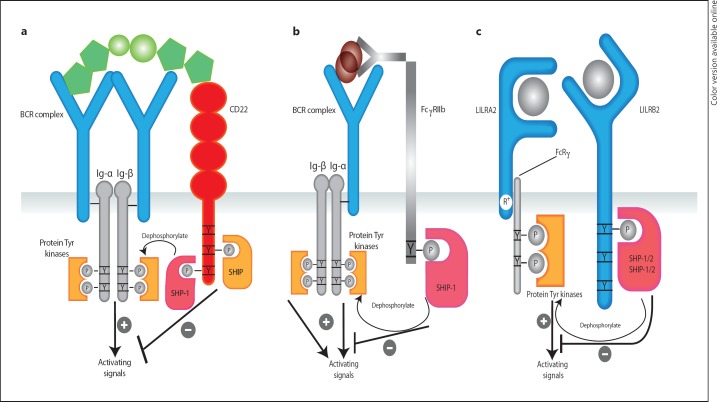Fig. 2.
ITAM and ITIM crosstalk regulating cellular activation. a Engagement of ITAM-containing BCRs by foreign and/or self-antigens causes cellular activation. This is counter-regulated by ITIM-containing CD22 likely via shared ligands such as sialic acid motif-bearing glycans, widely expressed on native cells and foreign organisms. When the sialic acid motifs are ‘self’, CD22 exerts a net inhibitory signal by counteracting BCR-mediated activation. When the antigen is foreign, the inhibitory effects of CD22 are lower permitting a robust BCR-mediated response. b Alternatively, binding of BCR to immune complexes causes phosphorylation of the ITAM sequences on the intracellular Ig-α and Ig-β chains leading to cellular activation. This activation can be counter-regulated by shared binding of these immune complexes to the ITIM-containing FcγRIIb. c Activating LILRA2 and inhibitory LILRB2 are co-expressed on the surface of mono-myeloid cells and share 82% homology on their ligand-binding domains. They represent an ideal pair that may fine-tune cellular activation via co-engagement by similar or shared ligands.

